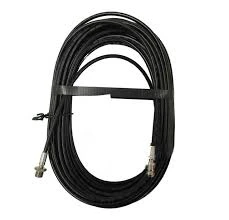hydraulic pipe coupling
Understanding Hydraulic Pipe Couplings A Key Component in Fluid Systems
Hydraulic pipe couplings are crucial components in hydraulic systems, which are widely used across various industries such as construction, manufacturing, automotive, and agriculture. These couplings serve as connectors that ensure a tight, leak-proof seal between pipes or hoses, enabling the efficient transfer of hydraulic fluid. Given their critical role, it's essential to understand their types, applications, and maintenance considerations.
Hydraulic couplings come in different designs and materials, depending on the specific requirements of the application. Threaded couplings, for example, are popular due to their ease of installation and reliable seal. Another common type is the clamp coupling, which allows for easy disconnection and reconnection, making it suitable for systems that require frequent maintenance or adjustments. Additionally, quick couplers provide a convenient solution for connecting hoses and pipes without the need for tools, enhancing operational efficiency.
The choice of materials for hydraulic pipe couplings typically includes steel, brass, and plastics
. Steel couplings are favored for their strength and durability, making them ideal for high-pressure applications. Brass couplings, while slightly less robust, are resistant to corrosion and are commonly used in systems that involve water or other non-aggressive fluids. On the other hand, plastic couplings are lightweight and resistant to certain chemicals, which can be advantageous in specific environments.hydraulic pipe coupling

In terms of applications, hydraulic couplings are employed in various systems, including hydraulic lifts, excavators, and agricultural machinery. In these settings, they facilitate the transmission of hydraulic fluid, which creates pressure that powers essential functions such as lifting loads, steering, and controlling movements. The reliability of couplings significantly affects the overall performance and safety of the hydraulic system, making their proper selection and maintenance paramount.
Regular inspection and maintenance of hydraulic couplings are vital to prevent leaks and ensure optimal system performance. Common issues include wear and tear, which can result from high-pressure fluctuations and exposure to harsh environmental conditions. Operators should routinely check for signs of damage, such as cracks or corrosion, and replace worn couplings promptly to avoid system failures.
In conclusion, hydraulic pipe couplings play a pivotal role in the efficiency and safety of hydraulic systems. Understanding the different types, materials, and maintenance needs can greatly enhance the performance of fluid systems. By ensuring that these components are properly selected and maintained, industries can improve their operational reliability, reduce downtime, and ultimately save on costs. As technology advances, the development of more innovative coupling solutions continues to evolve, promising even greater efficiencies and reliability in hydraulic applications.
-
Ultimate Spiral Protection for Hoses & CablesNewsJun.26,2025
-
The Ultimate Quick-Connect Solutions for Every NeedNewsJun.26,2025
-
SAE J1401 Brake Hose: Reliable Choice for Safe BrakingNewsJun.26,2025
-
Reliable J2064 A/C Hoses for Real-World Cooling NeedsNewsJun.26,2025
-
Heavy-Duty Sewer Jetting Hoses Built to LastNewsJun.26,2025
-
Fix Power Steering Tube Leaks Fast – Durable & Affordable SolutionNewsJun.26,2025

